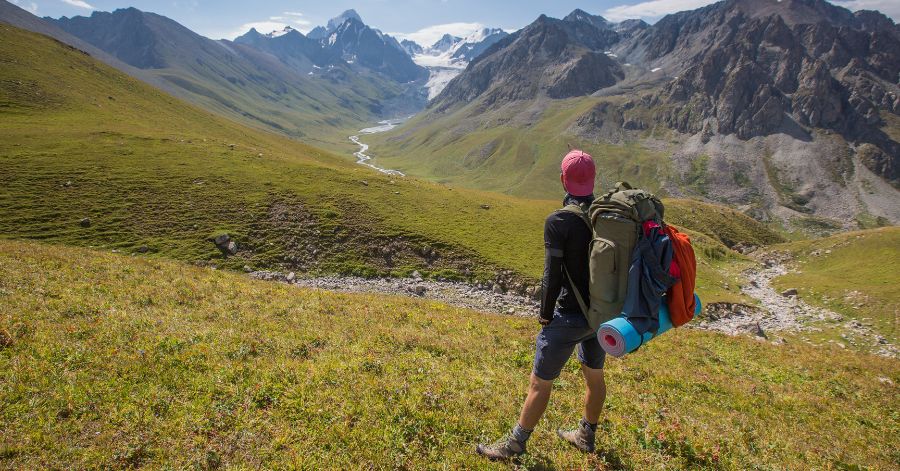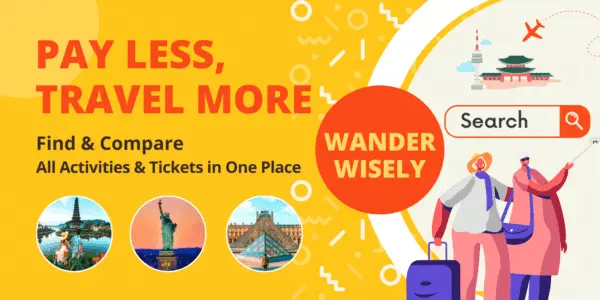In the world of traveling, many trends keep emerging each year. The kind of travel we are all familiar with (the one where we rush from one place to another or “fast travel”) is still widely followed and practiced by travelers. However, there are other ways to travel and experience the world than rushing everything to get from one place to another. One of these ways that is becoming practiced more is slow travel. We wrote this complete guide to slow travel to help you learn more about that trend.
This slow travel guide will tell you everything you need to know about the slow travel trend. By the end of our article, you will know the benefits of slow travel, how it gives you transformative experiences, planning tips, top slow travel destinations, and many more things you need to know about the slow travel trend.
Read Also:
- 15 Best Websites for Booking Day Tours and Travel Activities
- Top eSIM Providers for Seamless Global Travel in 2024
- 10 Best Free Travel Planner Apps and Websites
What is Slow Travel?
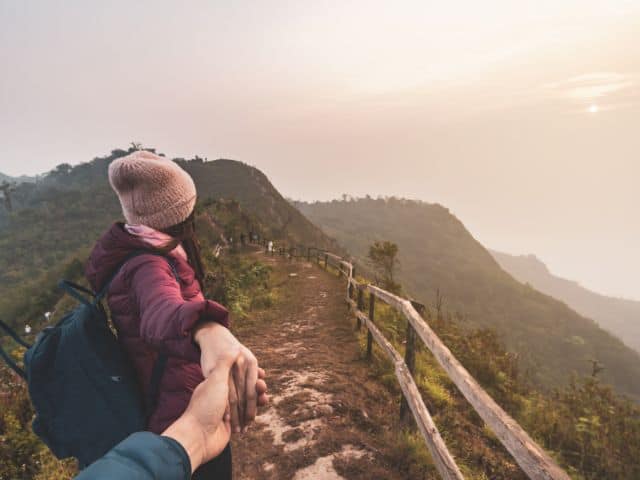
The slow travel trend has existed for a few years, but not everyone knows about it. Before you start thinking about the benefits of slow travel, you must know what slow travel is exactly. Slow travel is the kind of travel that allows you to enjoy transformative experiences. Through slow travel, you can connect with the locals of whatever place you are visiting (later on, we will recommend some slow travel destinations).
You will focus more on the journey when you decide to travel. You will be immersed in different cultures and places and create lasting memories through transformative experiences. Rather than spending a day or two at one destination, you will spend longer at each destination. This longer time will help you feel like a local rather than a tourist.
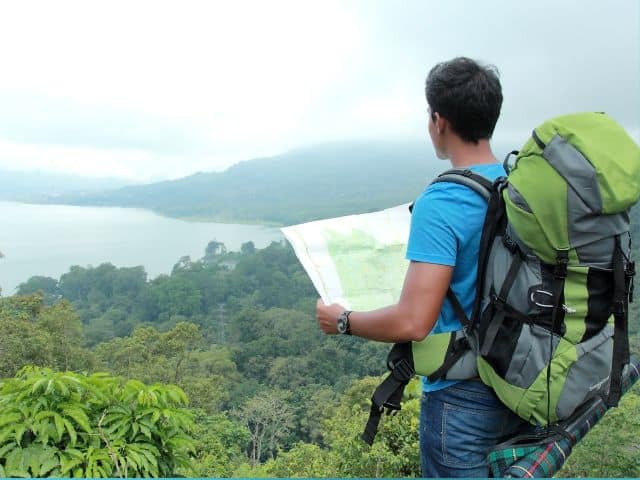
“Slow travel can be broadly defined as low carbon travel practices resulting in longer stays, less travel, enriched experience, the emphasis of the journey itself, and a deeper connection with a place, thus stressing more sustainable, responsible consumption practices,” states a research paper published by ScienceDirect. In simpler words, slow travel is about quality rather than quantity. It is better to truly enjoy and immerse yourself in one destination or attraction than rushing through it.
When you slow travel, you slow down by extent, and you will see the world and yourself in a different light; it is a way to improve your well-being. The rush of fast travel is replaced with being present at the moment. Once you experience slow travel and see its benefits for yourself, you will understand the rise of the slow travel trend.
When Did Slow Travel Emerge?
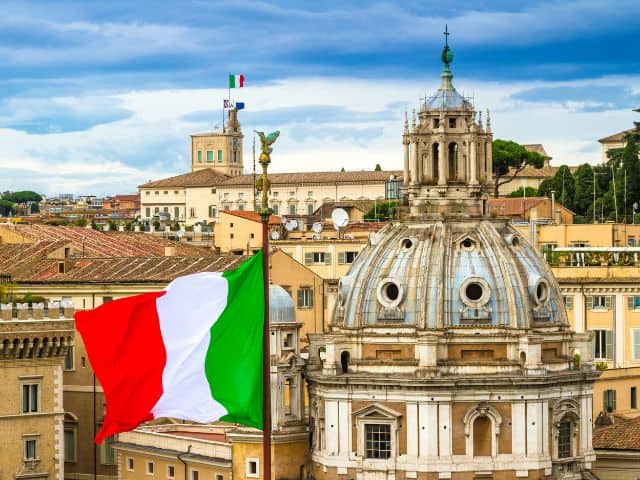
Like any other trend, slow travel emerged at a certain time. It was also inspired by another similar movement: the slow food movement in Italy in the 1980s. The slow food movement was a response to the rise of fast food. Carlo Petrini, the Italian author and activist, is the one we have to thank for founding the International Slow Food Movement.
What exactly happened? Local farmers and chefs and Petrini protested against a McDonald’s that would open in Rome. They wanted to protect and support their culture and the traditional cuisine. Fast food would only make people forget about the regional cuisine and appreciate it less. It would also harm the local farmers and the economy. So, people wanted to advocate for the local market and eat locally. An entire slow movement in different aspects of our lives started through this slow food movement. Now, we can see traces of the ethos of the slow food movement through the slow travel movement. Both of them are about slowing down and taking in the moment.
Numbers You Need To Know About The Slow Travel Trend
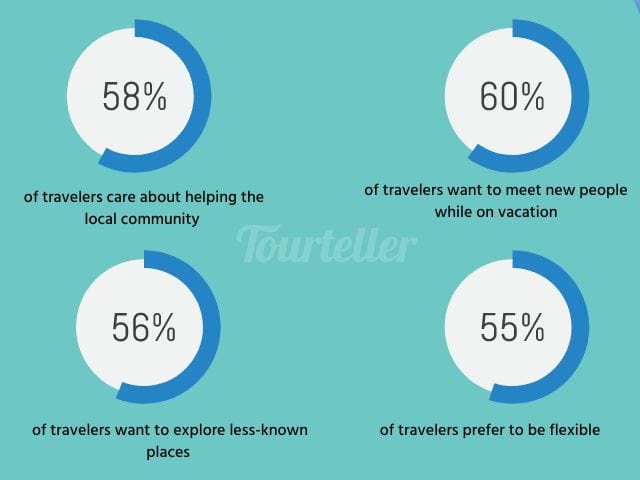
If this is your first time hearing about the slow travel trend, then you have some catching up to do. The slow travel trend has been rising for a couple of years now. What travelers care about keeps changing, and for a while now, they have been caring about the principles of slow travel. In a 2022 research published by Booking.com, 58% of travelers admitted to helping and benefiting the local community of any destination. The research states that “authentic connection with the local community will be a priority.” This goes hand in hand with slow travel. Also, 60% of travelers at the time of the research were looking forward to meeting new people while on vacation. The idea of meeting new people is part of slow travel. When you slow down and engage with the local community rather than feeling like you are in a race, you will be able to form more relationships.
In another research published by Booking.com in 2024, travelers are seeking many things that are part of slow travel, whether part of slow travel’s benefits or the principles of slow travel. For example, 56% want to explore less-known places rather than “touristy” and popular attractions. This is one of the things slow travel calls for to explore hidden gems or off-the-beaten-path destinations and have an authentic and meaningful experience. The research also indicates that 55% prefer no plans before traveling. While 69% prefer to be “flexible” and travel with “loose plans” to adapt to any changes or surprises while traveling. We are seeing more travelers letting go of strict adherence to their itineraries.
Benefits of Slow Travel

As more and more travelers start choosing slow travel over fast travel, it becomes clear that the former offers travelers a better experience. To understand why the slow travel trend keeps rising, we must look at the benefits of slow travel. These benefits will help you understand what slow travel offers and why you should try it. Here are several examples of the benefits of slow travel:
Slow Travel Helps You Save Money

One of the benefits of slow travel is that it helps you save money. If we compare slow and fast travel in terms of money spent while traveling, we will find that slow travel helps you save more money. How does slow travel help you save money? With slow travel, you avoid riding planes to protect the environment. You save a decent amount of money without paying for plane tickets and opting for different, better environments and transportation methods.
Another way that helps you save money is that with slow travel, you spend longer periods in different places. Many accommodations will make you pay less when you stay long. Unlike fast travel, you pay a lot and only stay for a day or two. In addition, with slow travel, you want to live like a local and avoid tourist spots. When you support local shops and places, you spend less money than going to popular food chains or tourist attractions.
You Save More Time By Choosing Slow Travel

Even though slow travel is about slowing down and immersing yourself in the moment, it doesn’t make you waste time because every moment matters. On the other hand, one wastes a lot of time with fast travel, whether when checking in/out of hotels or time spent in airports. You don’t have to worry about these two examples when you choose slow travel.
You Make New Connections

Another benefit of slow travel is that it helps you make new connections in each place you visit. When you live and travel like a local rather than a tourist, you are surrounded by locals rather than tourists. You focus more on your surroundings by slowing down and cherishing every moment. It becomes almost inevitable to experience slow travel without making new connections. You will form deep connections with the locals and travelers trying slow travel just like you.
Slow Travel is A Way For Growth

Part of the transformative experiences that you can gain from slow travel is the continuous chance for growth. When you visit a destination, immerse yourself in its culture, engage with the locals, and explore it meaningfully rather than hastily, you have room to be educated and learn about other cultures. When you slowly travel, you are met with the chance to look inside yourself in a foreign place, and with time, you become more familiar with both. This is how slow travel helps you grow.
Slow Travel Won’t Cause Travel Burnout

A negative aspect of fast travel is that it can cause travel burnout. When you constantly rush from one place to another, trying to see all the attractions in a destination so you can have time to head to another, this can cause travel burnout. However, the slowing down aspect of slow travel and the idea of quality over quantity won’t cause you to travel burnout; it will help you enjoy your time more and relax.
Slow Travel Has A Positive Impact on the Environment

One of the most important benefits associated with slow travel is that it helps protect the environment. Many people consider slow travel one of the many ways to practice sustainable travel. With the joy that our planet gives us when we travel to different corners of it, it is always right to keep the environment’s safety in mind while traveling.
How is slow travel better for the environment? One way is to choose sustainable transportation other than planes; some use buses or bicycles. This helps us reduce our carbon footprint and protect the environment. In the research paper by ScienceDirect, they say that one of the outcomes of slow travel is that it “increased environmental consciousness.”
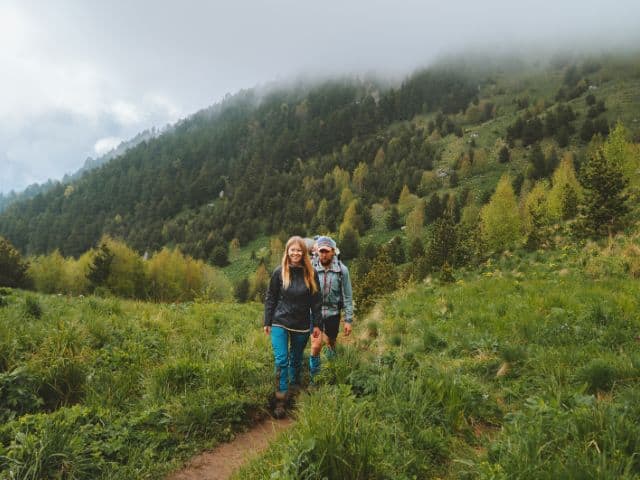
Travelers now want to make more sustainable choices, and slow travel allows them to do so. In a 2023 sustainable travel report published by Booking.com, 74% believe people must start making more sustainable choices. This will help us save the planet for future generations. In 2022, only 66% shared the same belief. This rise shows that new travelers who care about sustainability will lean toward slow travel.
Looking at research and statistics helps us understand the growing preference for slow travel. According to the research paper published by ScienceDirect, slow travel “is intimately connected to low-carbon travel because it encourages the utilization of less energy-intensive modes of transportation that may reduce carbon emissions.” We can’t ignore the Impact on the environment when we talk about the benefits of slow travel.
Slow Travel Helps You Support Local Communities
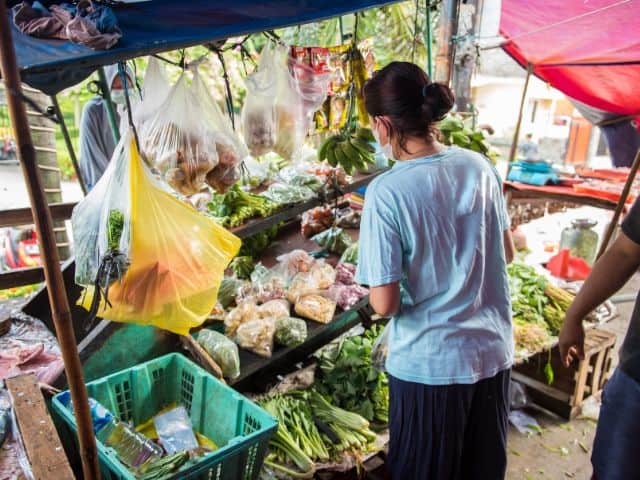
Not only does slow travel impact you, but it also impacts the places you visit. One of the great benefits of slow travel is that it helps you support local communities. This support for local communities is a main concern for many travelers now. According to the sustainable travel report by Booking.com, 75% of travelers want experiences “representative of the local culture.” Most of the time, such experiences will give back to the local community.
While 69% expressed their desire to spend to give back to the local community of their destination, this is possible when one chooses slow travel. With this new way of traveling, you are bound to see places differently. You will focus more on the local places that get lost in the crowds of tourist attractions. Through this, franchises are no longer profiting the most. The best part is that when you support the local community, you support places that care about the destination’s culture. This guarantees that you contribute to protecting the place with slow travel.
It Helps You Relax and Reduce Stress
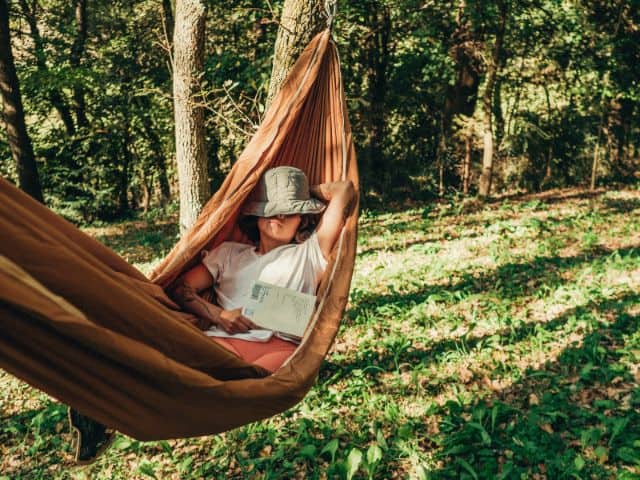
Another benefit of slow travel is that it helps you relax and reduces stress. When you travel slowly, you focus more on the journey than the destination. You find this oneness with nature through taking in your surroundings and appreciating them. Therefore, slow travel helps you become more mindful. That way, you reduce the levels of stress that are usually associated with the quick pace of travel. It becomes clear that slow travel helps increase your well-being.
Slow Travel Improves Your Well-being

In addition to reducing stress and helping you relax, the benefits of slow travel include improving your well-being. How exactly does it improve your well-being? When you try slow travel, you find out by the end of your trip that it positively impacts your physical and mental health and well-being. Because some, or most, of the activities you try while slow traveling are relaxing, such as yoga or meditation, you will find your body embracing these positive feelings.
The idea of oneness with nature also helps improve your well-being. This is because you focus more on your surroundings, so your screen time decreases. The toxic influence social media can have on us has also been reduced. This is why, in slow travel, you should focus on everything around you and immerse yourself in it.
You Gain Cultural Understanding of Different Places

Part of slow travel is to go out and surround yourself with local people. Since slow travel lets you spend more time in each place you visit, you will spend more time communicating with locals. The conversations you will share with them can help you learn more about the customs and traditions of each place you visit. Deep conversations like these will give you a deeper cultural understanding of each destination you visit. Then, you open your eyes to how others live and become more accepting of differences.
Planning Tips For Slow Travel
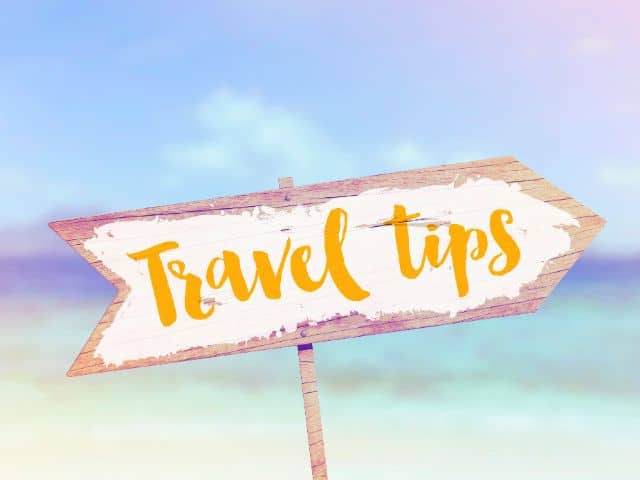
Some planning tips, like fast travel or any traveling method, could make traveling easier. These tips can help you plan your slow travel journey and learn more about making slow travel achievable.
Be Flexible in Planning
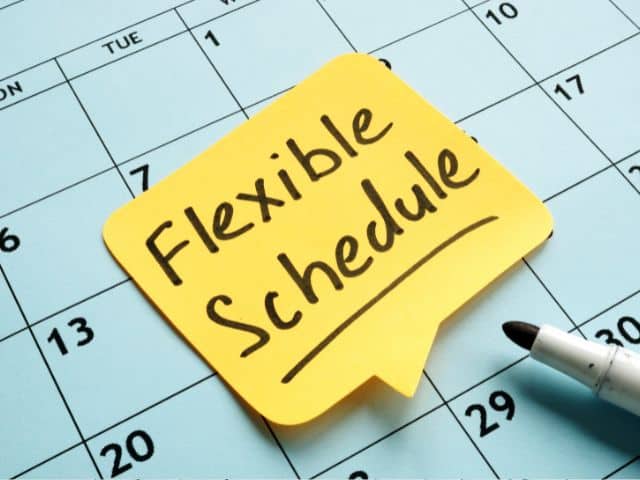
The first planning tip to remember when slow traveling is always to be flexible. To experience slow travel, you must focus on the journey rather than the destination. If you strictly plan everything, you won’t get the enjoyment that slow travel can offer you. When you keep a flexible itinerary, you will have the chance to experience new places that you have never seen before. If you are met with the chance to do something you didn’t plan for, you should do it. So, plan less and always be open to new possibilities. In other words, don’t be afraid to leave your comfort zone.
Make Sure To Use Sustainable Transportation
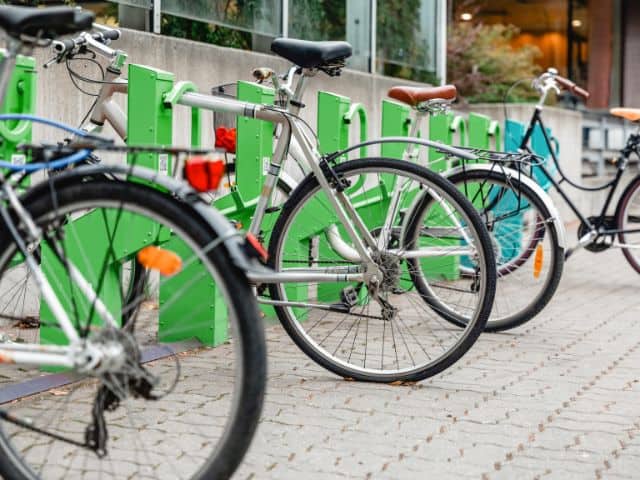
Slow travel goes hand in hand with sustainability. You can’t truly experience slow travel by using planes as people do when fast traveling. To practice slow travel, you have to use sustainable transportation methods. According to Booking.com, 43% of travelers “planned their sightseeing so that they could walk, bike or take public transport.” Not only does using planes defy the entire purpose of “slow” travel, but it also costs a lot more and harms the environment.
Other ways of transportation fit the concept of slow travel. These methods also protect the environment and cost a lot less. You can use public transport such as buses and trains. Another method is to rent bikes and cycle through the destination as you slowly but completely enjoy it. You can also opt for carpooling, which saves money and causes less environmental harm. Another way you can use while slow traveling is walking. With walking, you get more of the benefits of slow travel. You also won’t have to limit yourself to public transport schedules and won’t harm the environment.
Pick Destinations That Are Perfect For Slow Travel

To make slow travel easier, choose a destination that allows you to experience slow travel. You need to immerse yourself in the local culture and search for a place with a rich culture. Also, you should choose a destination with a slow pace in many aspects of life there. If you head to a place where people are always rushing, it can be difficult to truly and fully experience slow travel.
Choose Fewer Destinations
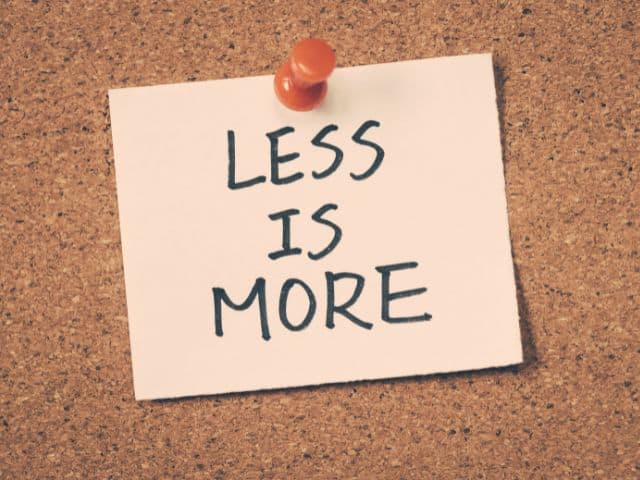
Fast travel is all about rushing from one destination to another and trying to check everything off your list. On the other hand, slow travel is the complete opposite. Instead of choosing dozens of destinations to visit where you will only pass by them in haste, choose fewer destinations.
You can fully practice slow travel when you choose fewer places to visit. This way, you will immerse yourself in each destination and appreciate it more. You no longer have to worry about rushing through a place, so you have enough time to go to another place. As you travel slowly, you must accept that you can’t visit everything. You can, however, enjoy the few places you do visit.
Stay in Places For Longer Periods
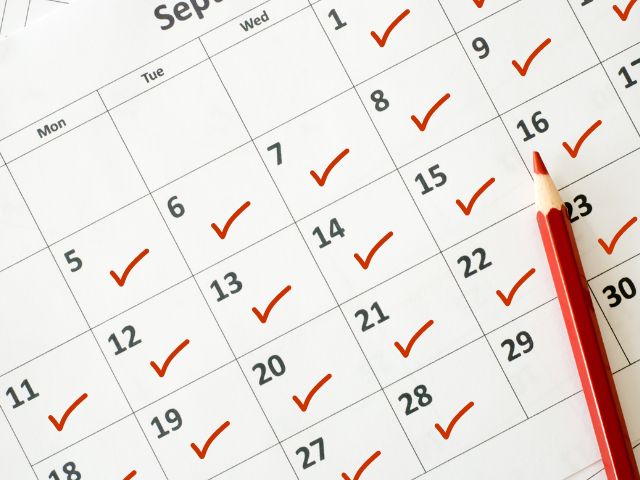
Part of slow travel is to extend your stay in each place you visit. Spending longer periods in places gives you more time to enjoy the benefits of slow travel. You could explore each destination on a deeper level than what you are usually used to. It can be difficult at first to let go of the fast travel mindset where you try to do many things in a few days. However, with time and more experience, you will get used to the slow pace of travel. And always remember that slow travel is about the quality of your journey to a destination. It isn’t about how many destinations you can visit.
Don’t Let Technology Consume You
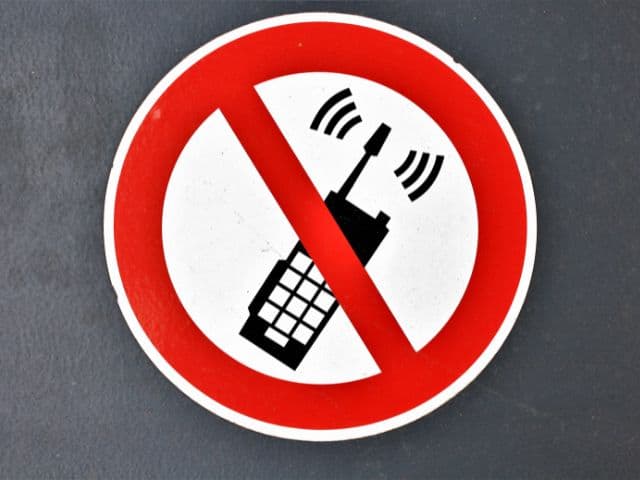
With fast travel, we are used to always using electronic and smart devices. Many people search for apps to use at their next destination. Not to mention that many travelers focus on taking hundreds of pictures while traveling. These actions are not wrong when you are traveling the usual way. However, with slow travel, trying to avoid using technology is better. You can still take your mobile phone or laptop in case of emergency or if you are working. Just limit your screen time and focus on experiencing the place around you.
Do Your Research About Accommodations

Before you decide to head to any destination on your slow travel journey, make sure to research each accommodation you come across. Since slow travel should be sustainable and help the environment, search for sustainable places. Also, try to choose accommodations that are owned by locals or will help locals. Not only will this help you give back to the local community, but you will have a great chance to be closer to locals and form deep connections with them.
Try Not to Over Plan
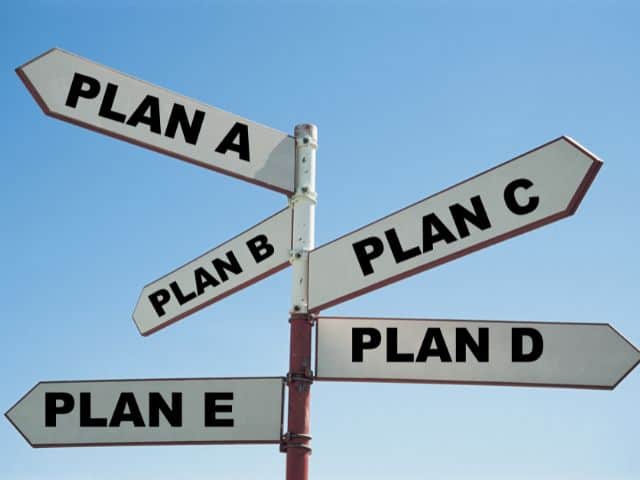
Over-planning defies the purpose of slow travel. One of its benefits is that it allows you to be flexible, and you should use that. Write very few plans instead of filling your itinerary with many plans and making it strict. Allow yourself to be flexible and to experience the unexpected. Only then will you be able to enjoy your journey and the transformative experiences that slow travel gives you.
Travel During the Off-season
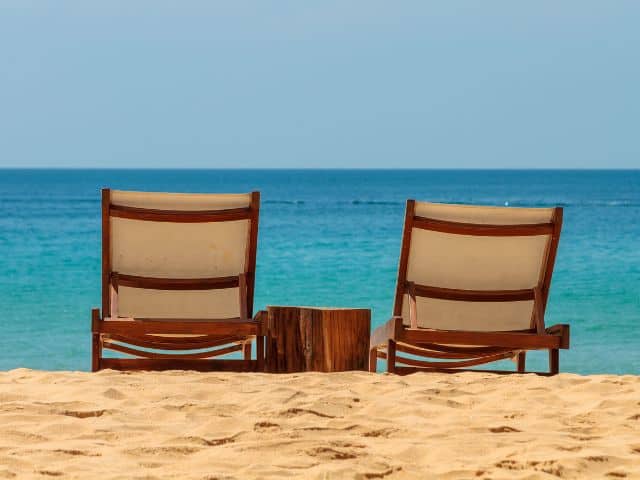
When you choose slow travel, you want to head to destinations that are not crowded. Even when you choose local places and hidden gems, it can get crowded during the season for travel. Therefore, try to travel during the off-season. This will allow you to enjoy slow travel a lot more without being reminded of the habits of fast travel. Traveling off-season can also save you money when booking accommodations, and you will be able to stay for a longer time.
Don’t Forget to Protect the Environment

We must mention this tip since sustainability and environmental care are essential to slow travel. You should always consider protecting the environment while on your slow travel journey. You can do that by packing fewer items or taking the essentials. Another thing to do is to try to use recycling bins whenever possible. You should also try buying paper straws and shopping bags to avoid using plastic. Don’t forget to use a reusable shopping bag to decrease waste.
Why Slow Travel Can Be Hard

Our guide about slow travel wouldn’t be truthful if we didn’t share the difficulties that come with slow travel. Just like fast travel has some difficulties; slow travel also has difficulties. It won’t be easy, but you have to decide if it is worth it for you or not. So why can slow travel be hard?
It Can Give You Fear of Missing Out
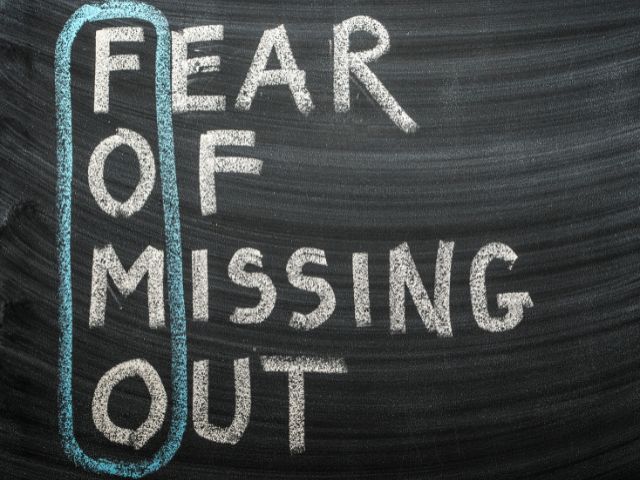
Many travelers like fast travel because it allows them to see many destinations quickly. Not only that, but the usual way to travel is to see the “must-see” attractions. On the other hand, slow travel isn’t like this at all. When you choose slow travel, you also choose to see a few destinations in a longer time. It also means you don’t spend the entire journey visiting popular attractions. This can create the fear of missing out on the other experiences that fast travel allows you.
Slow Travel Can Get Lonely
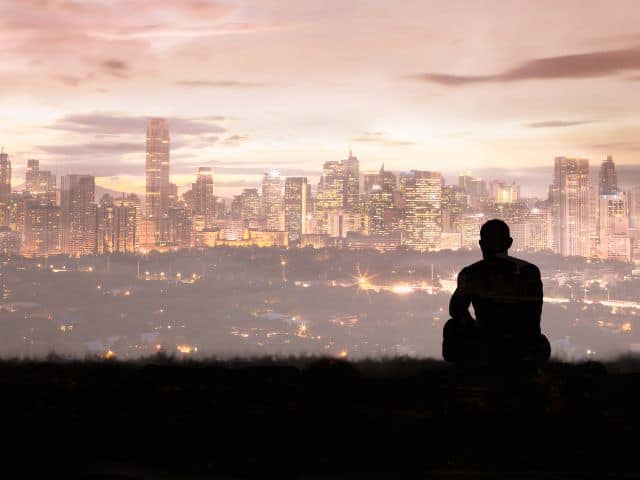
We already established that you would spend longer periods in places where you are slow traveling. The long time you spend in each place also means you are away from home for a long time. Forming new connections with the locals or fellow travelers also takes time. This is why slow travel can get lonely and make you miss home. But remember, part of the principles of slow travel is to make yourself feel like a local rather than a tourist.
With Slow Travel Comes Language Barriers

Since part of slow travel is to engage with the local community, you will spend a lot of time with locals. You will meet different communities and cultures, which can be both a blessing and a curse when it comes to slow travel. There is joy in learning about new cultures and languages, but some language barriers also come along the way. You have to keep an open mind and exert effort to learn about other cultures and languages. It can take time, but it will also teach you perseverance. This is part of the self-growth that slow travel can gift you with.
It Can Be Hard to Let Go of Habits
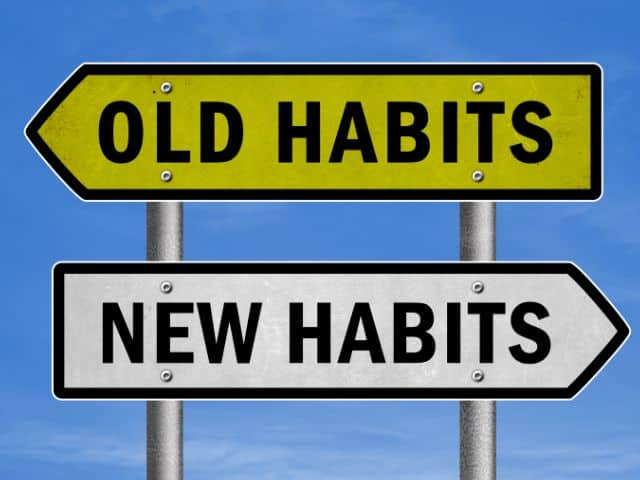
If you are just beginning to try slow travel, it can be hard for you to get used to it. When one travels a lot, the things you are used to doing can become habits. With slow travel, you must let go of this old habit and embrace a new one. It is time to have a new mindset. So, it can be difficult to convince yourself that you shouldn’t check your itinerary again. Or that you shouldn’t plan every little detail. But to erase old habits, you have to create new ones. In this case, you need to accept slow travel habits.
Can You Slow Travel While Working?
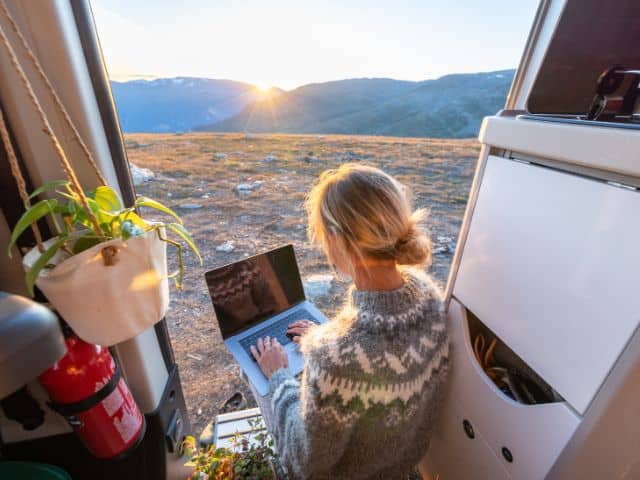
Before we tell you about our favorite slow travel destinations, we have to answer an important question that comes to mind when thinking of slow travel. That question is: Can you travel slowly while working? Since slow travel requires you to be present at the moment and spend a long time at each destination, some people who work full-time can be afraid to try it. However, slow travel while working is still possible! Whether you work as a freelancer or have a 9 to 5 job, you can try slow travel.
By working remotely, which many companies are starting to adopt, you can travel slowly after you finish work. To do so, ensure you have access to the Internet connection at the destination you are staying in. You can then work and start your adventure to your destination. If you can enjoy your time after work and immerse yourself in your surroundings, then you are experiencing slow travel.
Top Destinations for Slow Travel
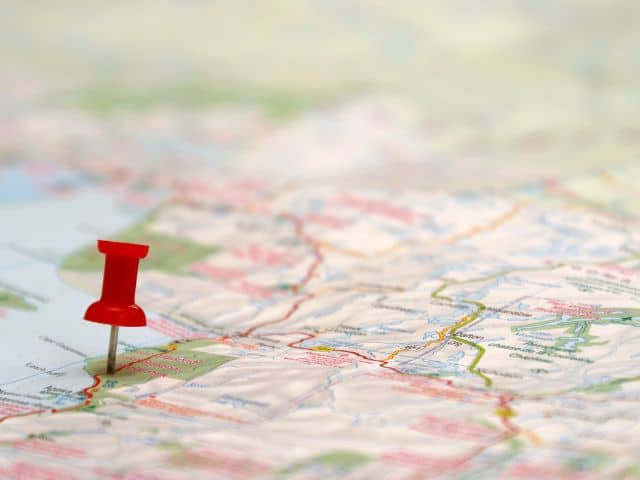
There are really good destinations you can head to when choosing slow travel over fast travel. Our advice would be to choose destinations with activities that go hand in hand with slow travel. Choose a place where you can enjoy the benefits of slow travel while you are there. To help you get started, here are our picks for top destinations for slow travel.
Italy
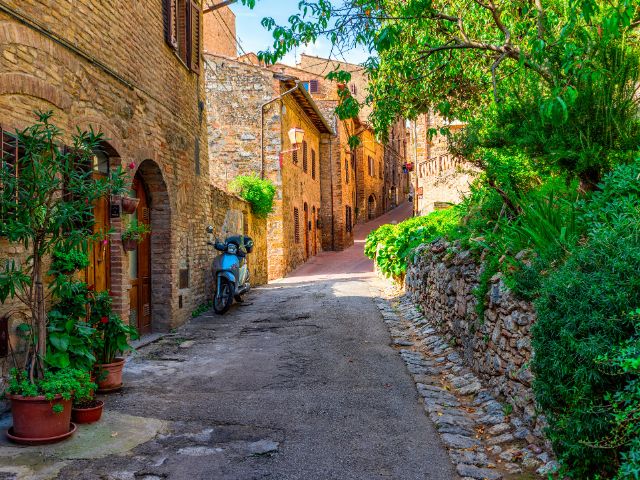
It simply won’t be fair to mention top slow travel destinations without mentioning the place where it all started. In Italy, you will find many places to experience slow travel. You can find a villa to stay in while there just to avoid hotels and stay true to slow travel. Some Italian spots you can try include Tuscany, Umbria, Puglia, Sicily, and many more. Some activities you can do while slow traveling in Italy include walking through vineyards and taking cooking classes.
Thailand
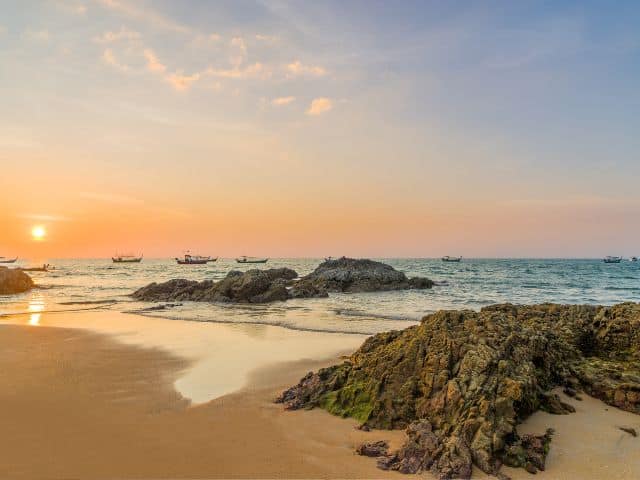
Another slow travel destination is Thailand, where you can experience many great things to experience slow travel through. You can head to Khao Lak, a small village in Phang Nga province. There, you can enjoy lesser crowds and the beautiful beaches that the village is celebrated for. Many reasons make Thailand one of the top destinations for slow travel. Some of these reasons include the beauty of nature and the locals’ friendly. These reasons, and many others, will provide you with a great environment to enjoy slow travel.
New Zealand
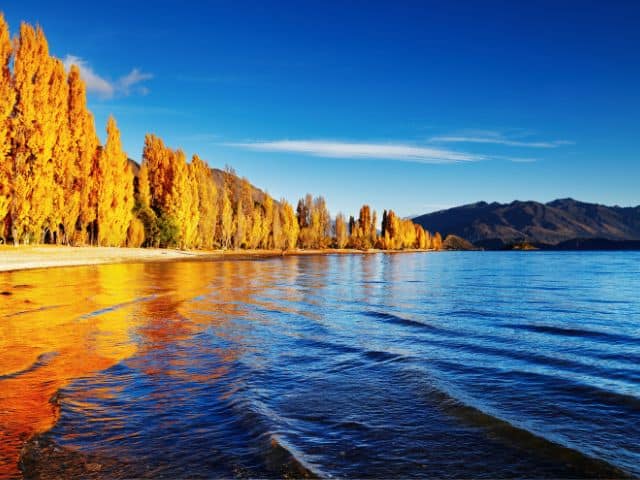
New Zealand is our next suggestion for slow travel destinations. Like Italy, New Zealand has many great places you can visit and slowly travel through. One of these places is Wanaka on the South Island, where you will find beautiful mountains; this is one way to enjoy transformative experiences.
You will also find great activities to try out in New Zealand, such as walking through the South Island; this is very fitting for slow travel. It helps that New Zealand is known to many as one of the best places to go hiking. Therefore, if you went there and tried to walk through the beautiful places, you would be slow traveling since walking is one way to avoid transportation methods that harm the environment.
Greece
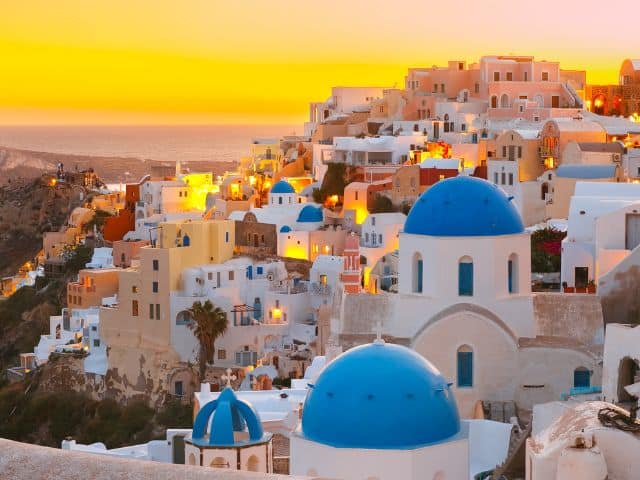
Greece can also serve as a great destination for slow travel enthusiasts. You can appreciate slow travel and its benefits through Greece’s beautiful islands and beaches. While heading to Greece, you can opt for sustainable transportation methods to take you there; this way, you won’t harm the environment. One of the options available is taking a ferry, which is less harmful than taking a plane. If you think about it, all the islands in Greece are perfect for slow travel with their rich culture and heritage and the beautiful views there. Don’t forget to ask the locals for things to experience so you can practice slow travel.
India
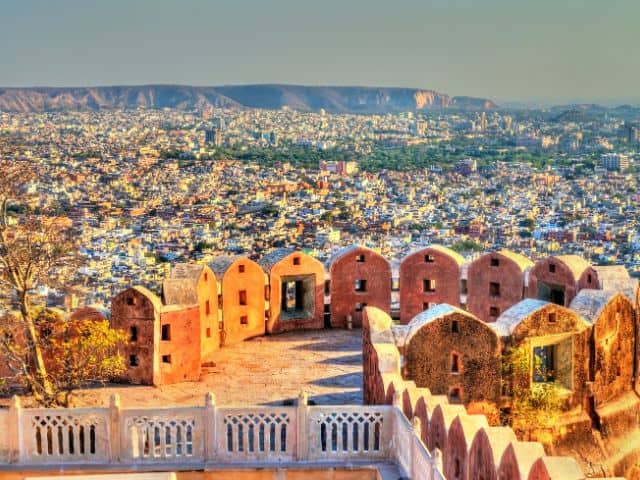
While India has always been a great place to practice and witness spirituality, it is also a great destination for those interested in trying slow travel. One of the most popular states in India for slow travelers is Rajasthan, filled with hidden gems. In Rajasthan, you will be met with a very rich culture and history ready to be explored by you! Walk through the streets there and be among locals as you pass by bazaars. The state has its own cuisine called Rajasthani cuisine; part of the activities you can do while slow traveling is enjoying the rich cuisine of each place you visit. You can also visit the palaces in the capital of Rajasthan, Jaipur.
Spain
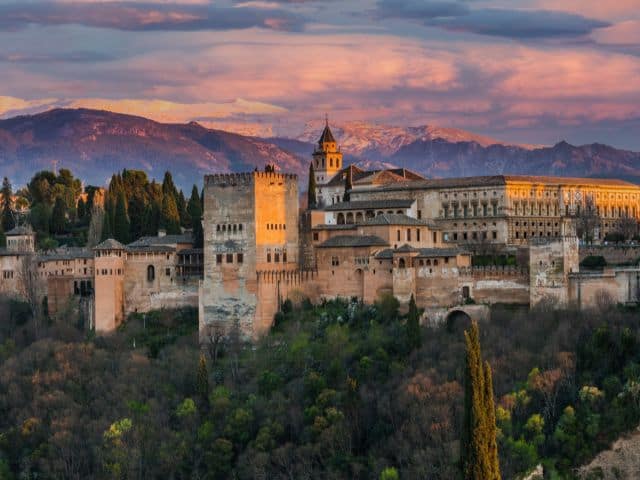
Adding Spain to our list of slow travel destinations proves you can slow down even in popular places like Spain. The beauty of Spain can be explored in the slow travel way if you want to. For example, visiting the Balearic islands of Mallorca will surely offer you the chance to have transformative experiences. You can also head to Granada and witness the beauty of the Alhambra Palace. Just ensure you don’t rush through the place to reach your destination. After all, slow travel is about the journey.
In our slow travel guide, we covered everything there is to know about the slow travel trend. We told you what slow travel was when it emerged and the benefits of slow travel. In addition, we shared with you important statistics about slow travel and how it is on the rise among travelers; you can be the next traveler to try it. We also give you tips to help you embrace slow travel and the transformative experiences it can give you. We also told you about our picks for the top slow-travel destinations. Slow travel can be experienced in many places, but ensuring you experience slow travel at least once matters.
